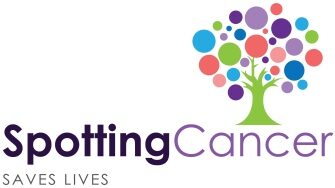Seat Belts: A Lifesaving Habit
Seat belts have become an indispensable part of vehicle safety. According to the National Highway Traffic Safety Administration (NHTSA), the national seat belt use rate was 91.6% in 2022. This widespread adoption has had a profound impact, with seat belts saving an estimated 374,276 lives from 1975 to 2017. The message is clear: consistent use of seat belts significantly reduces the risk of fatal injuries in car accidents. That’s where our 5-step plan to spotting cancer comes in – start here: https://spottingcancer.org/cancer-symptoms-and-signs/
Smoke Detectors: Early Warning Systems
Similarly, smoke detectors serve as critical early warning systems in our homes. The National Fire Protection Association (NFPA) reports that when present, smoke alarms operated in 90% of reported home fires large enough to activate them. Despite this, roughly three out of five fire deaths occur in homes with no smoke alarms or non-functioning ones, highlighting the importance of proper installation and maintenance.
COVID-19 Vaccines: Preventing Severe Illness
The recent COVID-19 pandemic underscored the value of vaccinations. Studies have shown that people who received the updated COVID-19 vaccine were 54% less likely to contract the virus during the four-month period from mid-September 2023 to January 2024. Vaccinations have proven effective in reducing the severity of illnesses and preventing hospitalizations.
Gym Memberships: Investing in Long-Term Health
Investing in physical fitness is another proactive measure many take. Research indicates that achieving desired health benefits and improving physical appearance are primary motivators for long-term gym members. Regular exercise contributes to overall well-being and can reduce the risk of various chronic diseases.
The Paradox in Cancer Detection
Despite the clear benefits of these preventive measures, there remains a paradox when it comes to cancer detection. Early detection of cancer significantly improves survival rates. For instance, colon cancer caught early has a 91% five-year survival rate, compared to an 11% survival rate if detected late and has spread to other organs. Yet, many individuals do not undergo regular cancer screenings, missing the opportunity for early intervention.
Bridging the Gap: Applying Preventive Logic to Cancer
It’s imperative to extend the same preventive mindset we apply to other aspects of our health to cancer detection by knowing the signs and symptoms. Start with our 5 step process for spotting cancer: https://spottingcancer.org/cancer-symptoms-and-signs/
Through the process you’ll see how regular screenings and being attentive to bodily changes can lead to early diagnosis, more effective treatment, and better outcomes. Just as we prioritize wearing seat belts or installing smoke detectors, we should prioritize routine health check-ups and screenings.
Preventive measures like using seat belts, installing smoke detectors, getting vaccinated, and maintaining physical fitness have become integral to our lives, significantly reducing risks and improving health outcomes. It’s time we apply this proactive approach to cancer detection. Regular screenings and early interventions can be lifesaving. Let’s make cancer screenings as routine as buckling up in a car or checking the batteries in our smoke detectors.

